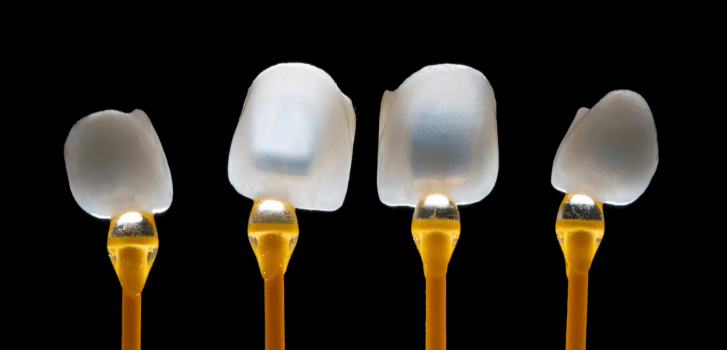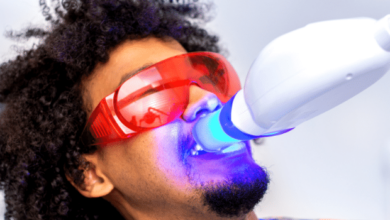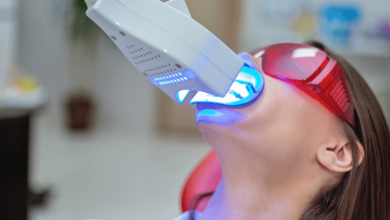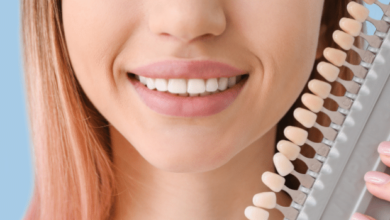What Is The Difference Between Various Veneer Types And Crowns?

Hello again, DentAbroaders! How are you today? I want to start my words by saying how wonderful you all are today. Yes you are! And we’re so happy to see you here today!
We know that most of you are confused about all those different veneer types and crowns.
First of all, it’s better we clarify those terms. What does a veneer and a crown mean?
Actually, these terms can be easily confused due to your current location. Let’s say you are in the UK and you told your dentist that you’d like to have veneers. In the UK this can be understood as you wish to have laminate veneers or lumineers which are basically quite thin porcelain layers like fake fingernails.
But if you’re in Turkey and you told your Turkish dentist that you’d like to have veneers, he/she will probably get confused and ask you which type of a veneer you meant.
It’s not because they’re dumb. It’s because some terms regarding veneer types have slightly different meanings in some countries. For example, in Turkey, a veneer refers to a more general term which includes all crowns, laminates veneers and lumineers. You have to be clear about what you want to have specifically.
Although it’s not quite possible for you to choose only by yourself whichever type of veneers you’d like to have (‘cause only a dentist can decide which type of veneer is suitable for you), still, you should be sure about what you are getting.
Because, as you can easily imagine, once you’re abroad and in a country whose native language is not English, there will always be a language barrier. This is why you should completely be sure about what you are getting and leave nothing to chance.
Back to the terms, fellas!
So, when we say crowns, they’re basically caps which envelop the teeth from every visible surface one hundred percent. Since they have much more retentive surfaces than any laminate veneers or lumineers, some people can count on them in terms of lasting longer.
Crowns can be produced out of standard porcelain, zirconia or e-max. I’ll get back to the materials in a couple of minutes. Be patient, DentAbroaders! One step at a time!
Laminate veneers and lumineers are very thin layers almost like fake fingernails which are fitted onto your natural teeth’s front surfaces. The only difference between a laminate veneer and a lumineer is that lumineers require no preparation (drilling) on your natural teeth whereas laminate veneers require preparation.
While they are quite conservative as they need minimal preparation or no preparation at all, you need to have almost the perfect teeth before getting them. They have quite limited indications, i mean, if your teeth are too crooked in the beginning, you can’t get them fixed by laminates or lumineers. You can only be able to fix small imperfections by these.
These can be made out of either zirconia or e-max. But not standard porcelain.
 At this point, having talked about veneer types a bit, let’s talk about the raw materials briefly.
At this point, having talked about veneer types a bit, let’s talk about the raw materials briefly.
I know you’re getting bored guys but hang in there! We’re almost there!
Okay, we have mentioned standard porcelain, zirconia and e-max so far. Although there are some other materials, these three are the most commonly used raw materials in smile makeovers.
I’ll try to keep it simple. So, you have to keep in mind that standard porcelain has a gray-coloured base and the aesthetic porcelain is fused to that gray metal base. Although the base metal stands inside of the crown, still you can see its reflection through the gumline. So, despite the fact that standard porcelains are way much cheaper than the other options, they’re not the most preferable solution for a smile makeover which you are getting done only for aesthetic reasons.
Let’s continue with the zirconia which is the most common and preferable material for smile makeovers. Zirconia also refers to a porcelain fused to a metal base BUT, this time, base metal is white-coloured. So, you can’t see an unpleasant grayish reflection through the gumline. Zirconia is considered to be more expensive than the standard porcelain and cheaper than e-max. And it is really, really, really a strong and durable material. These features make it the most wanted material in the dental market.
Last of the materials, e-max. E-max can be easily described as a tooth-shaped glass. It’s not completely glass of course but it has no metal base or such. It’s a solid material that resembles glass. Although this feature of e-max makes it the most aesthetic material, it is also the most fragile one. Oh, and the most expensive for sure! So, being more fragile and expensive, e-max is still the second most common material for smile makeovers after zirconia.
Well, DentAbroaders! We’ve learned too much today! Now you can say all the differences of both the veneer types and the materials. Please remember that Team DentAbroad is always here to help you! You can always contact us for anything you’d like to ask regarding your dental adventure abroad!
We love you guys, take care and brush your teeth!



